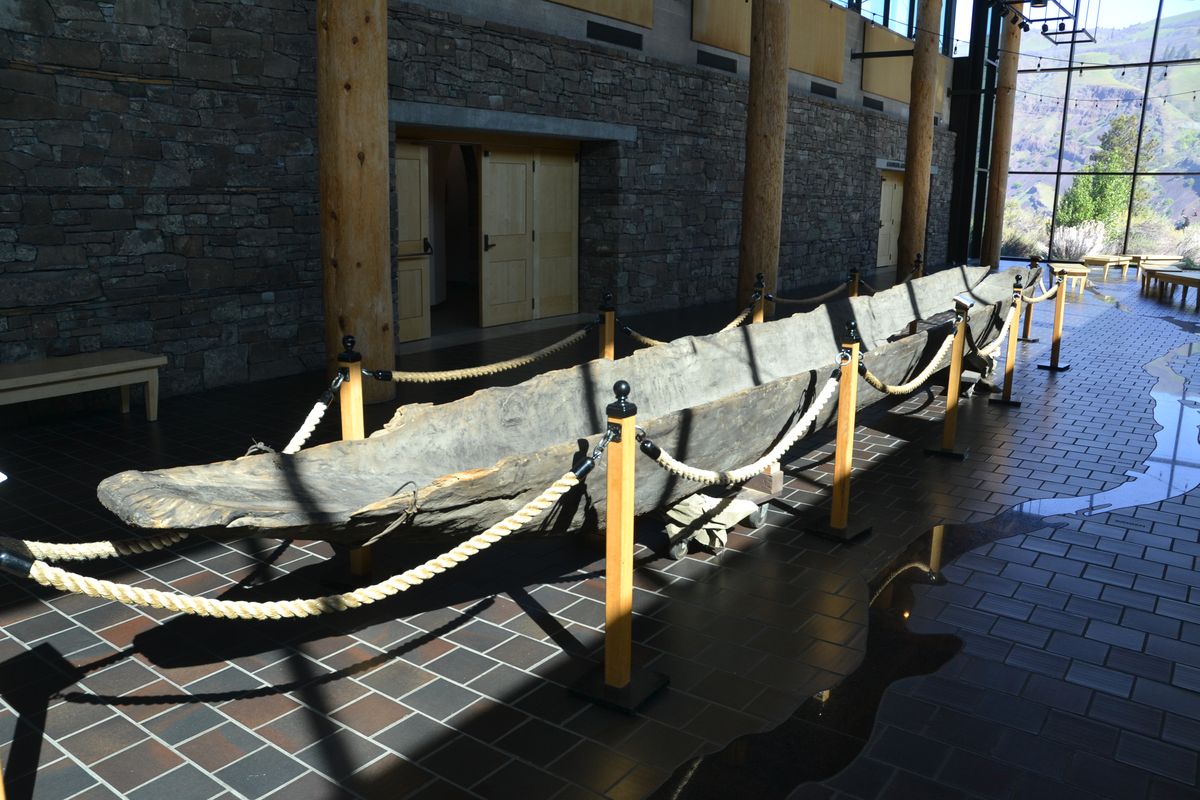Exploring The Dalles: Dive into regional history at Columbia Gorge Discovery Center and Museum

The city of The Dalles, Oregon, overlooking the banks of the Columbia River, has quite the history. The number of early chapters reads like a table of contents in a nonfiction book. The events can be found, revealed and enjoyed at the Columbia Gorge Discovery Center and Museum.
Native American history
The Dalles area is one of most significant archaeological regions in North America. It was a major trade center for at least 10,000 years. Four tribes – the Warm Springs, Yakama, Umatilla and the Nez Perce – lived in the surrounding area, each having access to the river. The tribes all had an important, common interest: salmon. Similar as to how the bison was the life blood of the Great Plains tribes, the river bounty of fish was their major source of food.
In the spring and summer, other tribes extending from what is now Canada, Idaho, California and even the Great Plains met at The Dalles to fish, trade extensively, intermarry and gamble. The area became the center of a peaceful Indian trading network with thousands of natives involved during the spring and summer salmon runs. The museum displays several baskets that show the artistry and craft used to produce a sturdy carrier while collecting wild berries.
Lewis and Clark
The Lewis and Clark expedition passed The Dalles area twice. Traveling downstream in October 1805, Meriwether Lewis and William Clark encountered Native Americans who described what the explorers would encounter, including rapids we would call Class V and one of four falls named The Dalles. They made camp and visited a tribe with a lightweight canoe that could carry a heavy load. They bartered for the canoe.
They portaged the falls but decided to run most of the rapids with the canoes. The Indians, who were excellent canoeists, watched from the bank as they ran the rapids thinking they would drown. They, of course, survived. On the return journey upriver in 1806, they camped at the same site. The museum has on display a dugout canoe like the ones used by the Lewis and Clark expedition.
The Oregon Trail
After surviving crossing the entire continent starting in 1840, emigrants reached The Dalles facing “the end of the Oregon Trail.” Looking down the Columbia Gorge, whose river had turned into raging rapids with almost vertical rock walls on both sides, they must have been disheartened and felt trapped.
Their only option was to cut down trees, lash the logs together, take the wagon wheels off, pile all their belongings on the raft and try to float the river. The museum portrays the time with a fully loaded raft with a wagon ready to enter the river. After thousands had used the river route, the Barlow Toll Road finally opened in 1845. The rugged road was a longer way around Mount Hood but much safer.
Historic highway
This exhibit might be the best. In the museum, there is a tunnel with an antique Model T car parked inside. In the background is a wall-size image of the gorge with the Columbia River coursing through it. Here a visitor can find out that there is a historic highway that finally connected western commerce from Portland through the gorge to The Dalles and points east. There are other historic highways in the Northwest, but this one was spectacular and unique.
Engineer and landscape architect Samuel C. Lancaster was chosen to design most of the highway. He was committed not only to make it functional but also to display the natural beauty of the gorge. He designed a hard surface road with wide curves and maximum grades of 5%. Lancaster wanted to make the gorge’s “beautiful waterfalls, canyons, cliffs and mountain domes” accessible to everyone. This highway was built between 1913 and 1922.
This history doesn’t have to be just read; it can still be driven and experienced. The main road outside the entrance to the museum is the eastern end to the historic highway. There is a 16-mile section of the road that rises up on top of cliffs with views of the gorge and river, passes by waterfalls and leads to short hikes to more waterfalls. It’s worth the time.
Hydro-electric power
Hydro-electric dams along the Columbia are obvious for anyone traveling on either side of the river. They provided a big economic boost starting in 1937 under Roosevelt. A separate exhibit in the museum explains how they were constructed, the economic impact they had, the power grid that was established and the large area that became productive with irrigated crops. Two miles east and upriver of the city, The Dalles lock and dam was completed in 1957. The dam is almost one-half mile long and has 22 generators. It’s a chance to not only read about history but also experience it.
The dam’s center is open 9 a.m.-5 p.m. Fridays through Sundays between May 1 and Memorial Day weekend. After Memorial Day, the center begins daily operations seven days a week through Labor Day weekend. Labor Day through the end of September, weekend-only operations resume. No fees are charged.
The Columbia Gorge Discovery Center still has more for the visitor to uncover. There are outdoor historic buildings, live raptor (hawk and eagle) presentations, a cafe and a gift shop.